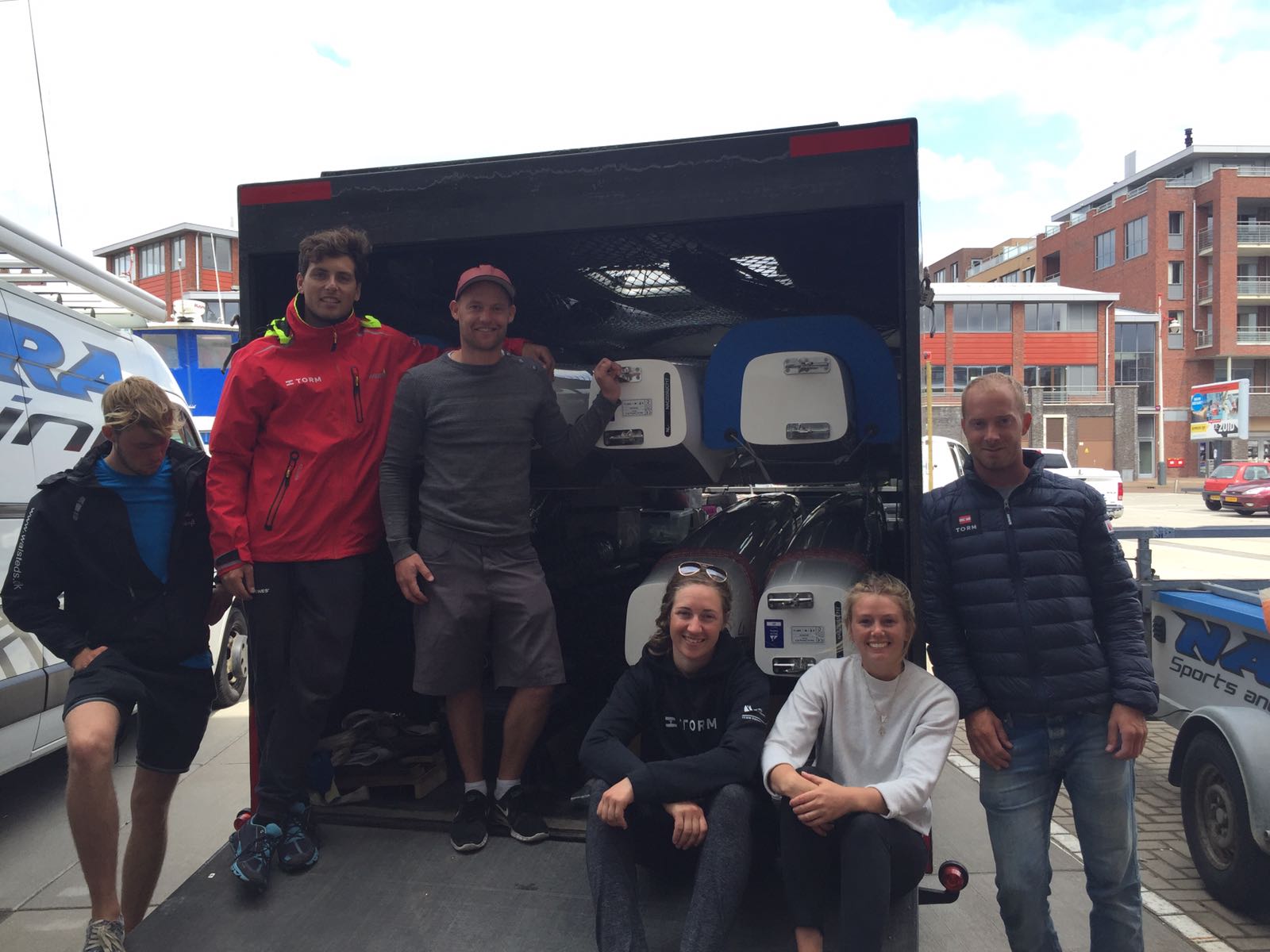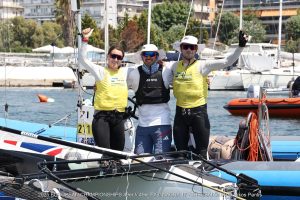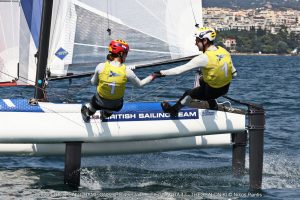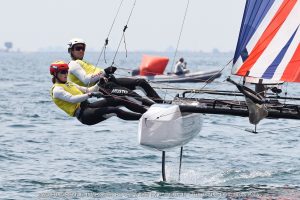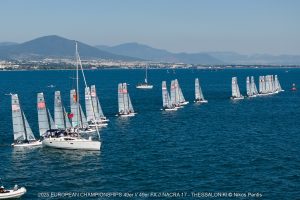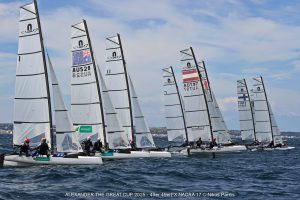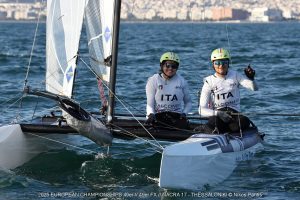Distribution of the fully foiling Nacra 17 has begun. The worlds top multihull teams have set sail on a new era of Olympic sailing.
30 new boats and 10 upgraded boats are being delivered by next week. After that roughly 7 new boats will be delivered every two weeks well into 2018 as the demand of the boat has been double the initial expectation.
The first batch of boats has been allocated as 1 per nation, with the next group of boats going to sailors finishing in the top 10 previously at Nacra Worlds and other sailors with notable podium finishes in other classes. By the worlds in September roughly 50 boats should be distributed, with deliveries continuing to the rest of the teams who placed deposits by a Jan 6, 2017 deadline.
It is not typical for Olympic equipment to be so late within a quadrennial, with the first Olympic qualifying only 1 year away. The mixed multihull has been under severe technological pressure from first inception. The design brief and initial awarding of the boat came six months before the America’s Cup boats of AC34 started fully foiling. Since that moment, this new design has been under constant pressure from sailors pushing it to the limit in order to replicate the performance gains seen of the AC boats. No other area of the sport has seen such rapid development as foiling catamaran sailing. Under strict manufacturer one design principles it has been a difficult road so far.
Just after the 2016 Olympics, the final decision was made to evolve the boat to full foiling and adopt new construction techniques to reinforce the design for higher speeds and loads. 41 weeks later and 2 week after the initial scheduled delivery date, 40 teams are now up and running toward 2020.

Performance
The sprint is on to learn as much as possible about foiling these boats. The design itself takes inspiration from the America’s Cup boats but practicality from the smaller A-Class designs. Unlike the ‘3-point’ foiling seen at the Americas’s Cup and other smaller versions, the Nacra 17 is a ‘4 point’ foiling design, meaning it is designed to run with the windward centerboard down and in the water at all times. This increases stability and decreases crew work in a short handed concept without much penalty for speed, which in a strict one design is not the ultimate goal any ways. What is especially nice about 4 point foiling for racing fans is that teams should be able to tack and gybe at short notice and with only a small penalty, which should make keep racing at a high intensity and enjoyable to watch.
Since February, 3 learning boats have been used constantly giving each Nacra 17 team a one week period to come and sail the full foiling boat. There was a dual purpose of the teams learning about foiling and the design and build team learning more about the boat as soon as possible. For the first three months the boats was sailed on the inland lakes of Holland, in relatively flat water though at times breezy and chilly conditions. For the past 6 weeks the venue was moved to sail on the sea-side of Holland to learn about sailing in wavy conditions. A decision was taken early in the process that initial builds would be held back so that the first teams did not receive an undue training advantage. The learning sessions allowed for feedback during this period, with the boats each being pushed by two sessions per day as each boat was double booked each week to maximize the amount of hours it would spend on the water.
Performance wise, but boat exceeding expectations so far. We’re seeing upwind foiling from 7-8 knots of breeze and down wind foiling from 6 knots, with teams able to carry on foiling downwind through lulls once up. At the higher end of the wind range, we’re seeing boatspeeds of 18 knots upwind and almost 30 knots downwind.
With so much foil under the boat, it does feel ‘draggy’ in very light conditions, and the class will have to consider allowing the windward board to be raised on the lightest conditions. It’s also been a challenging spinnaker to design, needing grunt in the draggy light air conditions and also flatness on the foils so that teams don’t get apparent wind headers that knock them off the foils. In tougher conditions, reports are that the boat is already more manageable than the C-Board configuration of 2016, with the elevator on the rudders providing stability sailors previously struggled without.
We’ve already seen the first foiling gybes and hoists. A foiling tack was almost pulled off already too, and we can bet with the world best multihull sailors attacking every aspect of the boat the boathandling we’ll see going forward will be impressive.
Racing
The next two month period is a critical one for the class and event. We’ll have two major regattas, as the European Championship is set for July 30-August 4th in Kiel Germany. 27 Full Foiling teams are expected as well as a C-Board division and the event is combined with the nacra17 and nacra17FX. Be sure to sign up for notifications of the live broadcasts. A limited entry regatta will then occur in Aarhus as a test for the Worlds next year, followed by the World Championship from La Grande Motte in the beginning of September. This time period is critical since the volume of sailing and learning that will occur will dwarf what’s come before it, and time is short before Olympic qualifying. The design and build teams are confident in the boats produced, with a new supply chain philosophy, new build techniques, and a new design all aimed at improving durability, repeat ability, and reliability.
Here are some photos of the Danish team picking up their boats and also a photo of one of the retrofit boats hanging all rigged up.



